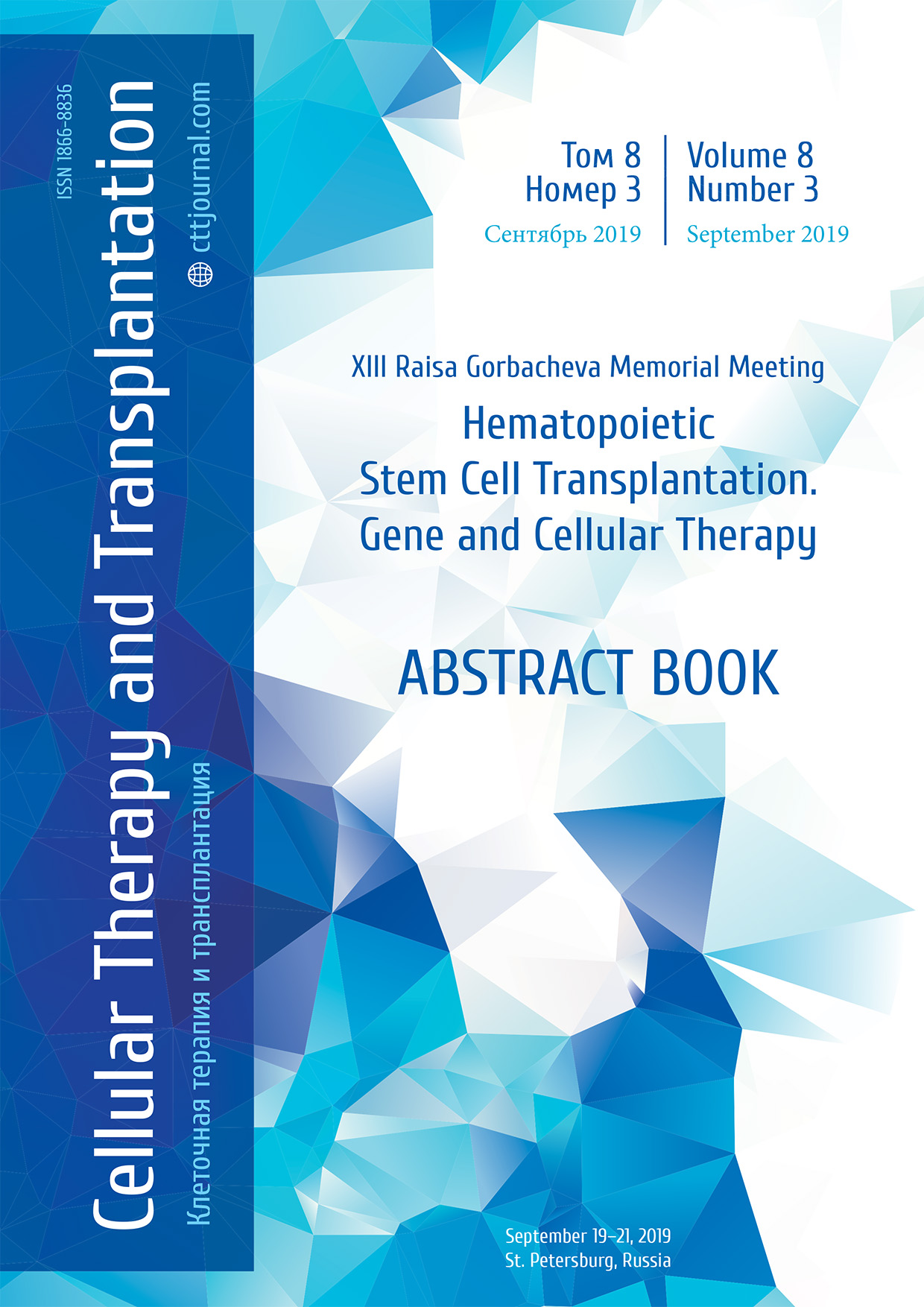Treatment of steroid-refractory acute and chronic graft-versus-host disease with ruxolitinib in children
Olesya V. Paina, Tatyana A. Bykova, Ivan S. Moiseev, Polina V. Kozhokar, Anastasia S. Frolova, Anastasiya S. Borovkova, Anna A. Osipova, Zhemal Z. Rahmanova, Kirill A. Ekushov, Liubov A. Tsvetkova, Inna V. Markova, Elena V. Semenova, Ludmila S. Zubarovskaya, Boris V. Afanasyev
Raisa Gorbacheva Memorial Research Institute of Pediatric Oncology, Hematology and Transplantation, Pavlov First Saint Petersburg State Medical University, St. Petersburg, Russia
Contact: Dr. Olesya V. Paina, PhD
E-mail: paina@mail.ru
Summary
Steroid-refractory graft-versus-host disease (srGVHD) is a life-threatening complication of allogeneic stem cell transplantation. Currently there is no standard of care for this complication and with existing modalities the survival remains relatively low. The study was conducted in children with steroid-refractory or steroid-dependent acute and chronic GVHD.
Patients and methods
The prospective study included 30 patients, (age 1-18 years, median – 5.5 years old). EBMT/ELN criteria were used for steroid refractory disease (T. Ruutu et al., 2014). Sixteen patients (pts) had acute srGVHD and 14 exhibited moderate or severe chronic steroid-refractory GVHD (srGVHD). Eight pts (27%) had acute myeloid leukemia; 7 pts (23%), acute lymphoblastic leukemia; 12 pts (40%) suffered with non-malignant disorders; 3 (10%), with other malignant diseases. The donor type was as follows: unrelated, in 18 cases (60%); matched related donor, in 1 case (3%); haploidentical donors were used for 11 recipients (37%). Patients with acute GVHD had a median of 2 prior lines of therapy (range 1-2), the patients with chronic GVHD had a median of 3 prior lines (range 1 to 6). 13 of 16 acute GVHD patients had grade III-IV disease, and 12 of 14 chronic GVHD patients had severe (NIH) disease. Ruxolitinib was administered at the starting dose of 0.3 mg/kg/day. Dose modifications were performed in patients in cases with grade 4 hematologic toxicities. Ruxolitinib was continued until complete response or absence of response in 28 days for acute GVHD and six months for chronic GVHD.
Results
Median follow-up for the surviving patients was 20 months (range 6-37). Overall response for acute GVHD was 81%. Complete response (CR) was observed in 11/16 patients with median time to CR 38 days (range 7-122). Three patients were in continuous partial response (PR), and two had progression of the disease. Overall response for chronic GVHD was 100%. 4/14 patients achieved CR after a median of 10.5 months of treatment (range 5-14 months). 10 out of 14 patients achieved PR after a median of 1.3 months of treatment (range 0.2-6.5). Non-relapse mortality occurred in 6/30 patients, GVHD progression was the cause of death in 3 cases, multidrug-resistant sepsis was fatal in 3 cases, and two patients died due to progression of underlying malignancy. Overall survival for patients with aGVHD was 62.5%; for cGVHD, 86%. Dose reduction/drug interruption due to cytopenia was required in 5/16 acute GVHD and 3/14 chronic GVHD patients.
Conclusion
Despite the small group size, our preliminary results indicate that ruxolitinib is a promising agent for managing srGVHD. Randomized prospective studies are required to confirm that ruxolitinib is superior to other approaches.
Keywords
Ruxolitinib, hematopoietic stem cell transplantation, allogeneic, graft-versus-host disease, acute, chronic, children.


